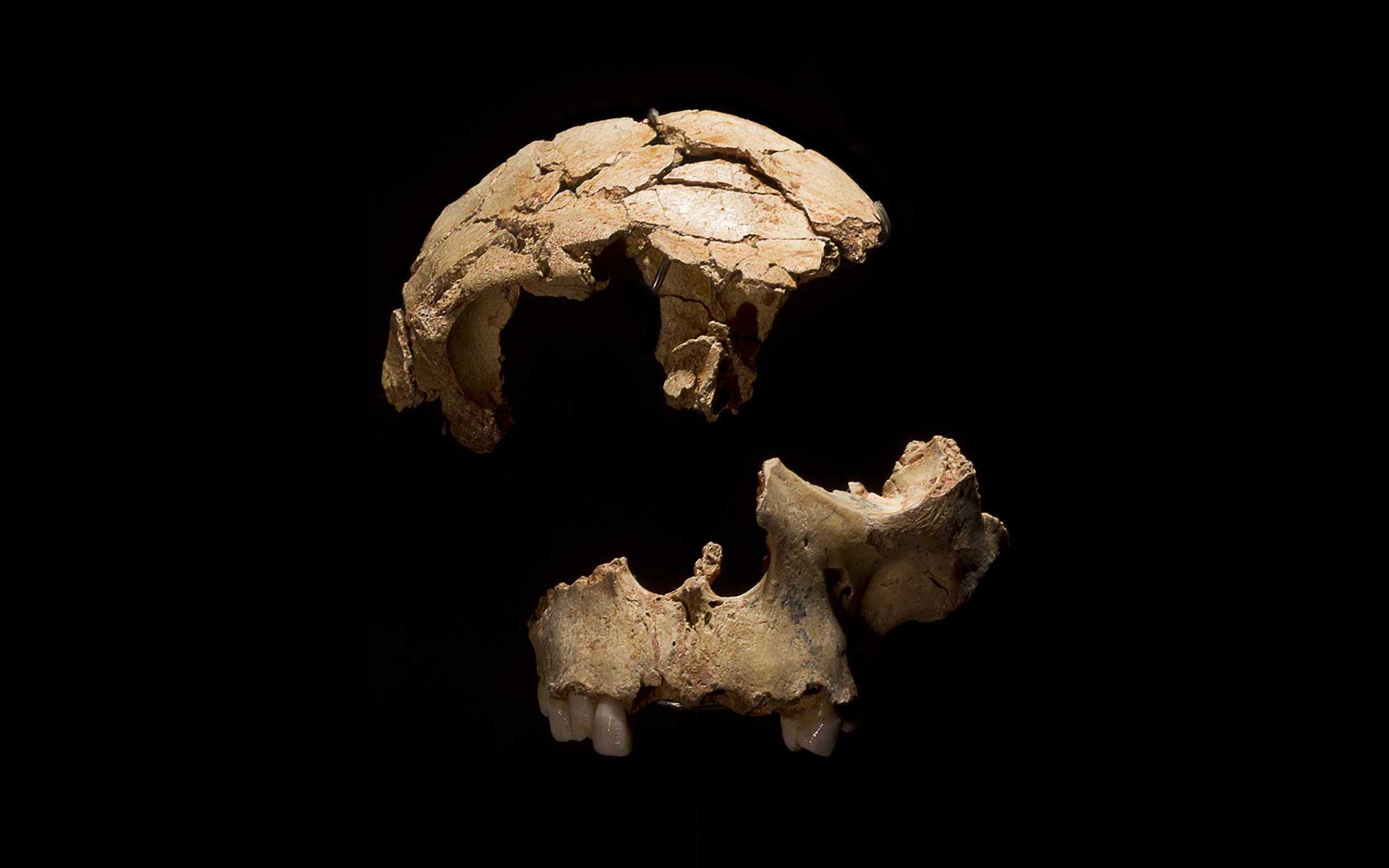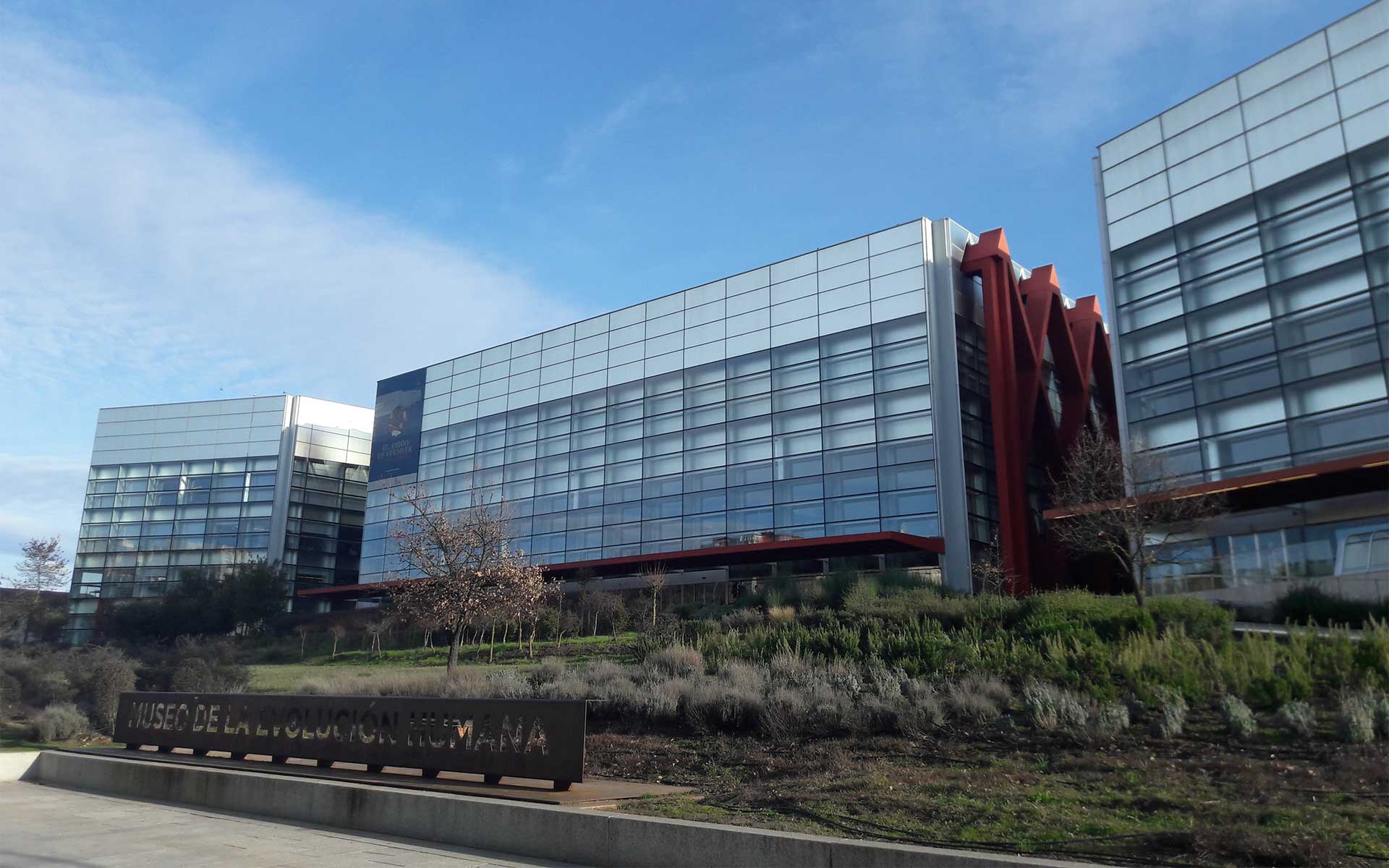Permanent collection of the Museum of Human Evolution, human remains from the paleontological and archaeological sites of the Sierra de Atapuerca
Spain

Homo antecessor skull from Gran Dolina (ATD6-15 and ATD6-69). MHE.
Housing institution
Museum of Human Evolution (Junta de Castilla y León)
Location
Paseo Sierra de Atapuerca 2, 09002 Burgos
42º 20′ 22,7″ N, 3º 41′ 50,1″
Homepage
Homo antecessor skull from Gran Dolina (ATD6-15 and ATD6-69). MHE.
The fossils from the Sierra de Atapuerca provide unique testimony of the origin and evolution of human civilization in Europe.
- Geo-collection description
The collection of original fossils comes exclusively from the paleontological sites of Gran Dolina, Galería, Sima del Elefante, Sima de los Huesos, Portalón and Mirador, located in the Sierra de Atapuerca (Burgos, Spain). The fossils from the Sierra de Atapuerca complex on display at the Museum of Human Evolution (MHE) are from the Museum of Burgos collection. They have been placed in the custody of MHE under an Order of the Regional Culture and Tourism Ministry of Castilla y León dated 21 June 2010.
The collection of samples is comprised of human remains, animals and lithic tools dated between 1.300.000 and 3600 years ago. At the moment, the museum collection has the best sample fossils of two species with public access: Homo antecessor and Homo heidelbergensis. These paleontological finds are property of the Junta de Castilla y León and were declared a World Heritage Site in 2000. Also, the collection is linked to a current research project such as the study of human activities at Sierra de Atapuerca, carried out by the Atapuerca Research Team and to which several research centers are attached.
- Geo-collection value
The museum collection constitutes an exceptional scientific reserve that provides priceless information about the appearance and way of life of these remote human ancestors. The earliest and most abundant evidence of humankind in Europe is found in the Sierra de Atapuerca. The sites constitute an exceptional example of continuous human occupation, due to their special ecosystems and their geographical location. The fossil collection is given because the recovered remains are found in original contexts from the Sierra de Atapuerca are an invaluable reserve of information about the physical nature and the way o relationship with the environment of the earliest human communities in Europe. At educational level, the museum improve knowledge about evolution and it´s visited by multiple educational centers as complementary learning for studies related to biology, geology or archaeology.
- Reference
- Arsuaga, J.L., Martínez, I., Gracia, A., Carretero, J. & Carbonell, E. (1993). Three New Human Skulls from the Sima de los Huesos Middle Pleistocene Site in Sierra de Atapuerca, Spain. Nature. 362. 534-7. 10.1038/362534a0.
- Bermúdez de Castro, J.M., Arsuaga, J.L., Carbonell, E., Rosas, A., Martínez, I. & Mosquera, M. (1997). A Hominid from the Lower Pleistocene of Atapuerca, Spain: Possible Ancestor to Neandertals and Modern Humans. Science (New York, N.Y.). 276. 1392-5.
- Carbonell, E. Castro, J., Parés, J. & Pérez-González, A., Cuenca-Bescós, G., Ollé, A., Mosquera, M., Huguet, R., van der Made, J., Rosas, A., Sala Ramos, R., Vallverdu, J., Garcia, N., Granger, D., Martinón-Torres, M., Rodriguez-Alvarez, X.P., Stock, G., Vergès, J.M., Allué, E. & Arsuaga, J.L. (2008). The first hominin of Europe. Nature. 452. 465-9. 10.1038/nature06815.
- Meyer, M., Arsuaga, J.L., Filippo, C., Nagel, S., Aximu-Petri, A., Nickel, B., Martínez, I., Gracia, A., Bermúdez de Castro, J.M., Carbonell, E., Viola, B., Kelso, J., Prüfer, K.& Pääbo, S. (2016). Nuclear DNA sequences from the Middle Pleistocene Sima de los Huesos hominins. Nature. 531. 10.1038/nature17405.
- Welker, F., Ramos Madrigal, J., Gutenbrunner, P., Mackie, M., Tiwary, S., Jersie-Christensen, R., Chiva, C., Dickinson, M., Kuhlwilm, M., de Manuel, M., Gelabert, P. & Martinón-Torres, M., Margvelashvili, A., Arsuaga, J.L., Carbonell, E., Marques-Bonet, T., Penkman, K., Sabido, E., Cox, J. & Cappellini, E. (2020). The dental proteome of Homo antecessor. Nature. 580. 10.1038/s41586-020-2153-8.
